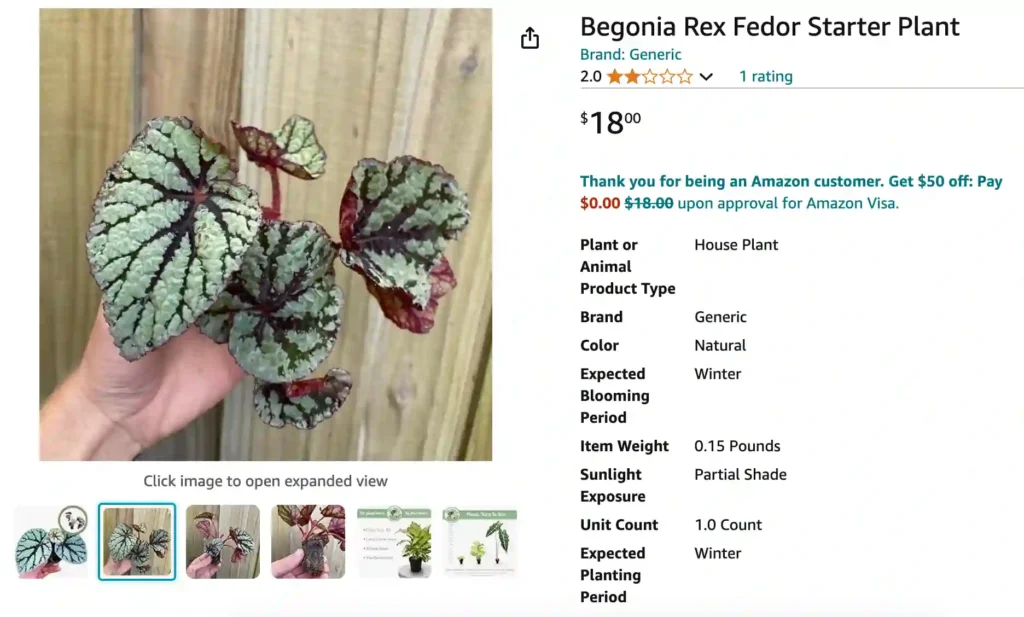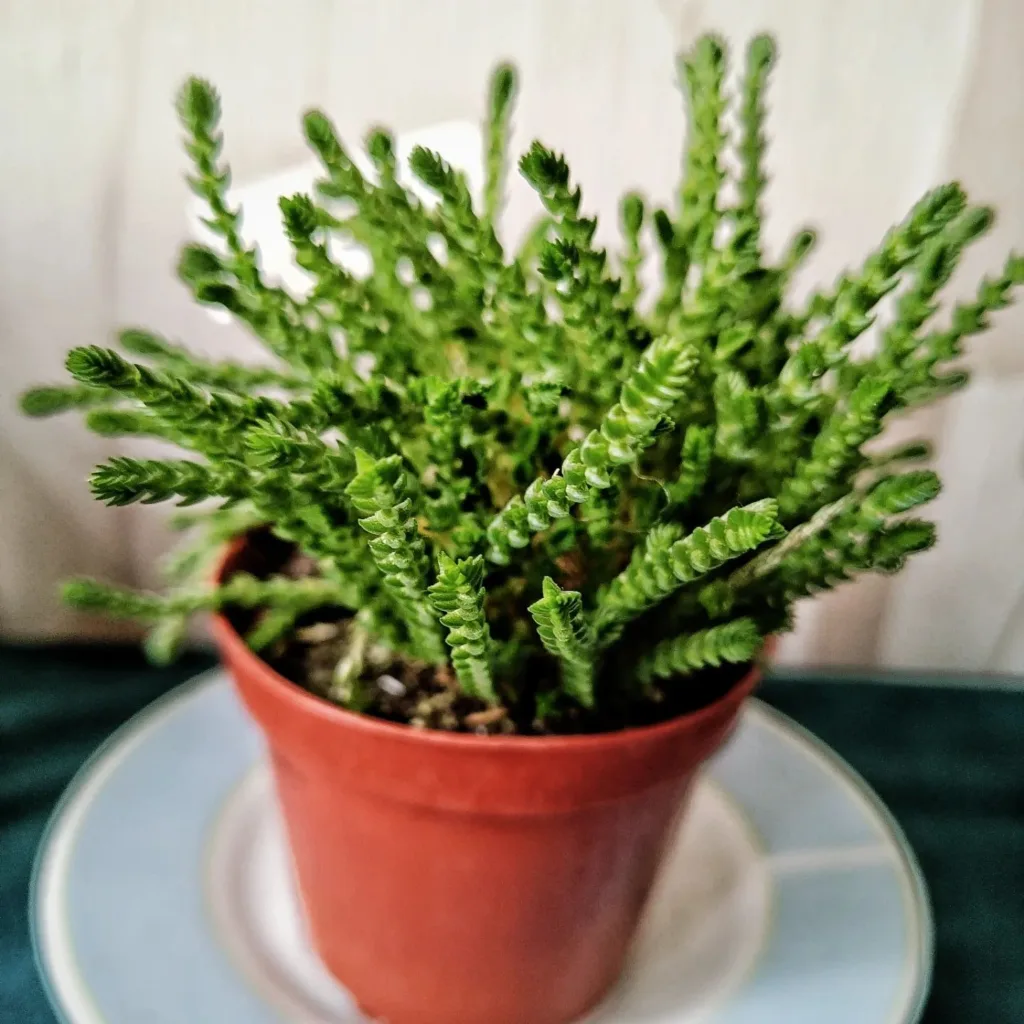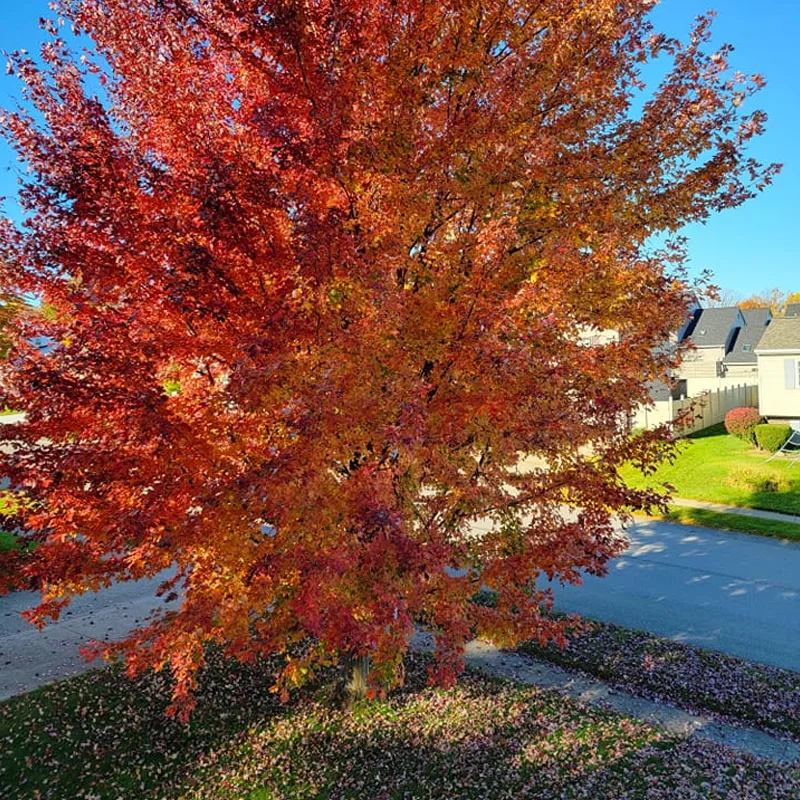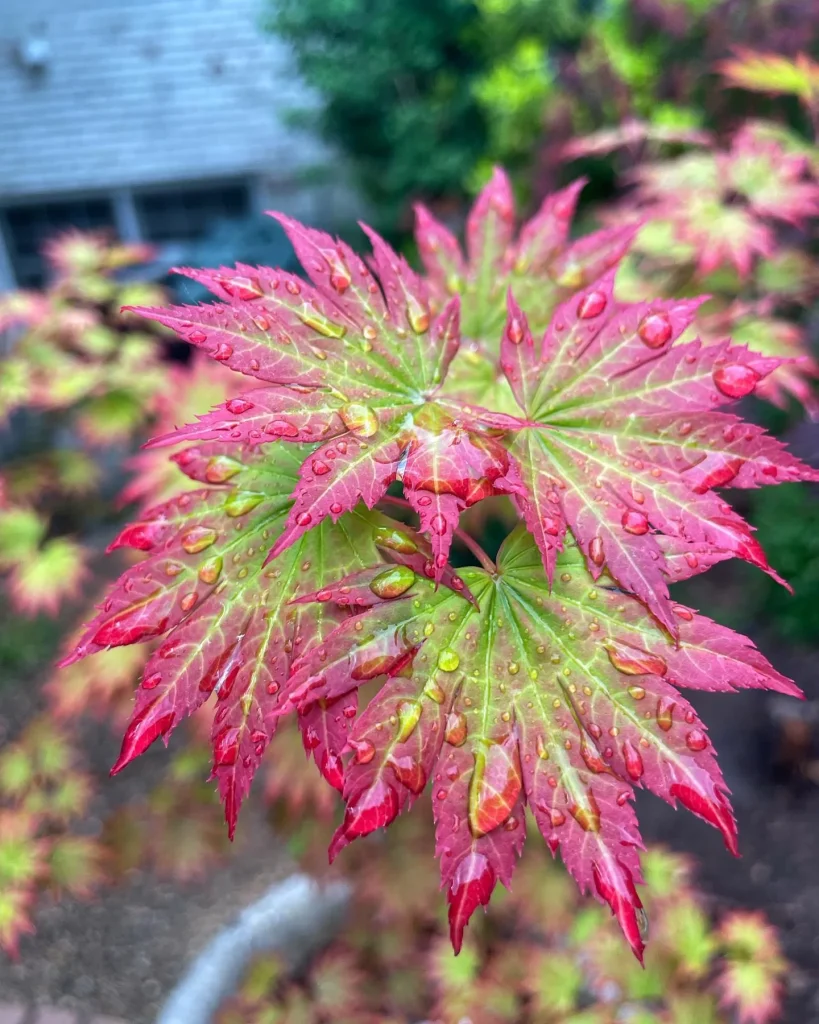
The world of houseplants is vast and varied, but few genera capture the imagination quite like Begonias. Among them, the Begonia rex cultivars stand out for their breathtaking foliage, often overshadowing their delicate blooms. One such gem is the Begonia rex ‘Fedor’, a hybrid renowned for its dramatic, iridescent leaves that shimmer with shades of silver, deep green, and often a hint of purple or turquoise. This article delves deep into the cultivation of this magnificent plant, offering a detailed care guide interwoven with a personal, two-year time-lapse journey of nurturing a ‘Fedor’ from a small cutting to a mature, thriving specimen.
Unveiling the ‘Fedor’: A Botanical Introduction
The Begonia rex ‘Fedor’ is a hybrid cultivar belonging to the Begoniaceae family, a diverse group of flowering plants native to tropical and subtropical regions around the world. While its exact lineage can be complex due to extensive hybridization, Begonia rex varieties, including ‘Fedor’, primarily originate from the humid forests of Asia, particularly India and surrounding areas. These plants are celebrated not for their flowers, which are typically small and pale pink, but for their spectacular, often metallic-hued, and intricately patterned leaves.
‘Fedor’ is particularly striking, characterized by its large, often heart-shaped or oval leaves that display a mesmerizing contrast. The central veins and edges are typically a deep, velvety green, while the main body of the leaf shimmers with a silvery-grey or even turquoise-blue, often with dark purple or black veining that creates a captivating, almost painted effect. The undersides of the leaves and the stems often share the same subtle turquoise or reddish tint, adding to its allure. It grows into a dense, mounding rosette, making it a perfect statement plant for indoor spaces or shaded garden areas in warmer climates.
Year 1: The Initial Spark – From Cutting to Established Plant
Month 1-2: The Delicate Beginning – A Cutting’s First Roots
My journey with ‘Fedor’ began not with a seed, but with a healthy stem cutting I received from a fellow plant enthusiast. It was a modest piece, about 4 inches long, with two vibrant leaves still attached. My first task was to encourage roots.
I prepared a small pot with a specialized rooting mix: a blend of peat moss, perlite, and a touch of coco coir, ensuring excellent drainage yet sufficient moisture retention. After dipping the cut end in rooting hormone, I carefully inserted the stem about an inch deep into the damp mix. To create the high humidity ‘Fedor’ craves, I placed a clear plastic bag over the pot, creating a mini-greenhouse. I positioned it in a spot that received bright, indirect light – a north-facing window sill, away from any direct sunbeams.
For the first few weeks, it was a waiting game. I checked the moisture daily, misting the inside of the bag to maintain humidity, but being careful not to let water sit on the leaves, as I knew Rex Begonias are prone to powdery mildew. By the end of the first month, tiny white nubs, the first signs of roots, began to emerge from the stem. It was a small victory, but a significant one.
Propagation Deep Dive: Stem Cuttings
Propagating Begonia rex ‘Fedor’ from stem cuttings is a highly effective method.
- Select a Healthy Stem: Choose a non-flowering stem section that is 4-6 inches long with at least two nodes (the points where leaves or branches emerge). Ensure it’s free from pests or diseases.
- Make a Clean Cut: Using sterilized sharp scissors or a knife, make a clean cut just below a node. Remove any leaves that would be below the soil line to prevent rot.
- Rooting Hormone (Optional but Recommended): Dip the cut end into a powdered or liquid rooting hormone to encourage faster and stronger root development.
- Potting Medium: Prepare a well-draining, airy mix. A good blend includes equal parts peat moss or coco coir, perlite, and coarse sand or fine orchid bark. This ensures aeration and prevents waterlogging.
- Planting: Insert the cutting 1-2 inches deep into the moist potting mix. Gently tamp the soil around the base to secure it.
- Humidity Dome: Cover the pot with a clear plastic bag, a plastic dome, or place it in a propagation box. This creates the high humidity essential for rooting. Ensure there’s some airflow to prevent fungal issues; you can poke a few small holes in the bag or lift the dome briefly each day.
- Light and Temperature: Place the pot in a location with bright, indirect light and consistent temperatures between 65-75°F (18-24°C). Avoid direct sunlight, which can scorch the delicate cutting.
- Watering: Keep the soil consistently moist but never soggy. Misting the inside of the humidity dome can help maintain moisture without wetting the leaves directly.
- Root Development: Roots typically form within 4-8 weeks. You can gently tug on the cutting; if it offers resistance, roots have formed. Once established, you can gradually acclimate the plant to lower humidity by slowly increasing the ventilation.
Month 3-6: Young Growth & First Repotting
By the third month, my ‘Fedor’ cutting was clearly established. New, tiny leaves, still a bit muted in color, were unfurling from the center. The root system was visible through the drainage holes of the small pot, indicating it was time for its first upgrade.
I chose a pot only slightly larger than the previous one – about 1 inch wider in diameter. Begonias, especially Rex types, prefer to be a bit root-bound, so oversizing the pot can lead to waterlogging and root rot. I used a slightly richer, but still very well-draining, potting mix: a blend of high-quality indoor potting soil, extra perlite (about 30%), and a handful of orchid bark for added aeration. I carefully removed the young plant, loosened any circling roots, and repotted it, ensuring the soil line was about an inch below the rim of the new pot.
This period also marked the beginning of its feeding schedule. I started with a highly diluted liquid fertilizer, specifically formulated for houseplants, applied once a month during watering. I also invested in a small humidifier for the room, as I noticed the edges of some leaves starting to crisp slightly, a tell-tale sign of insufficient humidity.
Soil & Repotting Essentials
Begonia rex ‘Fedor’ thrives in a well-draining, airy, and slightly acidic potting mix.
- Ideal Mix Components:
- Peat Moss or Coco Coir: Provides moisture retention and a slightly acidic base.
- Perlite: Crucial for aeration and drainage, preventing compaction. Aim for at least 25-30% of the mix.
- Orchid Bark or Coarse Sand: Enhances drainage and provides structure.
- Worm Castings (Optional): Adds natural nutrients and beneficial microbes.
- Activated Charcoal (Optional): Can help absorb impurities and improve drainage.
- Avoid Heavy Garden Soil: This will compact and retain too much moisture, leading to root rot.
- Repotting Frequency: Begonia ‘Fedor’ doesn’t need frequent repotting. Repot only when the plant becomes root-bound, typically every 1-2 years.
- Pot Size: Choose a pot only one size larger (1-2 inches in diameter) than the current one. Begonias prefer snug conditions.
- Drainage: Always use pots with drainage holes to prevent water accumulation.
Month 7-12: Maturing Foliage & Environmental Fine-Tuning
As the months progressed, my ‘Fedor’ truly began to show its characteristic splendor. The new leaves emerged larger and with more pronounced coloration – the silvery sheen became more intense, and the dark green veins stood out dramatically. It was fascinating to see the subtle shifts in color depending on the light intensity.
I learned to read its signals for watering: waiting until the top 50-75% of the soil felt dry before watering thoroughly, ensuring water drained from the bottom. I also made sure to discard any excess water from the saucer within 15-20 minutes to prevent root rot. The humidifier became a constant companion, keeping the room’s humidity consistently above 60%. I also started to rotate the pot regularly to ensure even growth and prevent it from leaning towards the light source.
During this period, I also had my first encounter with a common begonia issue: a few brown, crispy leaf edges. This was a clear sign the humidity wasn’t quite high enough, or perhaps a draft had hit it. I trimmed the damaged edges with sterilized snips and increased the humidifier’s output. The plant quickly recovered, teaching me the importance of consistent environmental conditions.
Essential Care Parameters
- Light:Begonia rex ‘Fedor’ thrives in medium to bright indirect light.
- Ideal Placement: A north or east-facing window is often perfect. If placing near a south or west-facing window, ensure it’s several feet away or protected by a sheer curtain to diffuse intense sunlight.
- Signs of Too Much Light: Scorched leaves, faded colors, crispy edges.
- Signs of Too Little Light: Leggy growth, smaller leaves, dull coloration.
- Watering: This is often the trickiest aspect of Begonia care.
- Frequency: Water when the top 50-75% of the soil volume feels dry to the touch. Use your finger or a moisture meter.
- Method: Water thoroughly until water drains from the bottom. Discard any standing water in the saucer after 15-20 minutes. Bottom watering can also be beneficial, allowing the plant to soak up water from below.
- Water Quality: Begonias can be sensitive to chemicals in tap water. Using filtered water, rainwater, or tap water that has sat out for 24 hours (to allow chlorine to dissipate) can be beneficial.
- Humidity: High humidity is crucial for Begonia rex ‘Fedor’.
- Ideal Range: 60-80% relative humidity.
- Methods: Use a humidifier, place the pot on a pebble tray filled with water (ensure the pot doesn’t sit directly in the water), or group plants together to create a microclimate.
- Avoid Misting: While it temporarily increases humidity, misting can leave water on the leaves, promoting fungal diseases like powdery mildew.
- Temperature: Maintain average room temperatures.
- Ideal Range: 65-80°F (18-27°C).
- Avoid Extremes: Protect from cold drafts (below 58°F/14°C) and sudden temperature fluctuations, which can stress the plant and cause leaf drop.
- Fertilizing: Feed during the active growing season (spring and summer).
- Frequency: Once a month or every 2-3 weeks with a diluted solution.
- Type: Use a balanced liquid houseplant fertilizer. For more vibrant foliage, a slightly higher nitrogen fertilizer (e.g., 9-3-6 NPK) can be beneficial. If you wish to encourage more blooms (though foliage is the main draw), a higher phosphorus formula could be used.
- Application: Always apply to moist soil to prevent root burn. Reduce or cease fertilization during fall and winter when growth slows.
- Pruning: Primarily for aesthetics and plant health.
- Remove Dead/Damaged Leaves: Trim off any yellow, brown, or crispy leaves at the base of the stem using sterilized snips.
- Encourage Bushiness: If the plant becomes leggy, you can pinch back or trim stems just above a node to encourage new, bushier growth. These cuttings can often be propagated.
- Remove Spent Flowers: While not the main attraction, removing faded flowers can redirect the plant’s energy towards foliage production.
Year 2: Flourishing & Overcoming Challenges
Month 13-18: Growth Spurts & Pest Patrol
Entering its second year, my ‘Fedor’ was a magnificent specimen. Its rosette was dense, and the leaves, now fully mature, displayed their intricate patterns with striking clarity. It had truly become a focal point in my plant collection.
This period saw significant growth spurts, especially during the warmer months. I continued my consistent care routine, but also became more vigilant about pest inspections. One day, I noticed tiny, almost invisible webbing on the undersides of a few leaves, accompanied by a slight dullness in color. My heart sank – spider mites.
I immediately isolated the plant. My first line of defense was a thorough rinse under lukewarm water to dislodge as many mites as possible. Then, I applied a neem oil solution, making sure to coat both the top and bottom of every leaf. I repeated this treatment every 3-5 days for a couple of weeks, and thankfully, the infestation was brought under control. This experience cemented the importance of early detection and consistent pest management.
Common Pests and Diseases
Begonia rex ‘Fedor’ can be susceptible to common houseplant pests and a few fungal issues, especially if environmental conditions are not ideal.
- Pests:
- Spider Mites: Tiny arachnids that create fine webbing, especially on leaf undersides. Leaves may show stippling (tiny yellow or white dots). Thrive in dry, warm conditions.
- Aphids: Small, pear-shaped insects that cluster on new growth and leaf undersides, sucking sap. They can excrete sticky honeydew.
- Mealybugs: Soft-bodied insects that appear as white, cottony masses in leaf axils and on stems.
- Thrips: Slender, winged insects that cause silvery streaks and distorted growth on leaves and flowers.
- Fungus Gnats: Small, dark flies that hover around the soil surface. Their larvae feed on organic matter and sometimes roots, indicating overly moist soil.
- Vine Weevils / Root Mealybugs: Less common indoors, but can attack roots, leading to wilting and decline.
- Diseases:
- Powdery Mildew: A common fungal disease appearing as white, powdery patches on leaves and stems. Favored by high humidity combined with poor air circulation and cool temperatures.
- Botrytis (Gray Mold): Causes fuzzy gray mold on leaves, stems, and flowers, often starting on damaged or decaying plant parts. Also thrives in high humidity and poor air circulation.
- Root Rot: Caused by overwatering and poorly draining soil, leading to mushy, blackened roots and wilting foliage.
- Leaf Spot: Various fungal or bacterial infections can cause discolored spots (yellow, brown, black) on leaves.
- Viral Infections (e.g., Begonia Mosaic Virus): Can cause distorted leaves, yellowing patterns, and stunted growth. No cure; infected plants should be isolated and removed to prevent spread.
- Prevention and Treatment:
- Good Air Circulation: Essential to prevent fungal diseases. Ensure plants aren’t overcrowded.
- Proper Watering: Avoid overwatering to prevent root rot and reduce fungus gnat populations.
- Sterile Tools: Always use sterilized pruning tools to prevent disease spread.
- Regular Inspection: Routinely check your plant, especially leaf undersides and new growth, for signs of pests or disease.
- Quarantine New Plants: Isolate new plants for a few weeks before introducing them to your collection.
- Treatment:
- Pests: For minor infestations, wipe leaves with a damp cloth. For more severe cases, use insecticidal soap, neem oil, or horticultural oil. Repeat applications are often necessary.
- Fungal Diseases: Improve air circulation, reduce humidity if possible, and prune affected parts. Fungicides may be necessary for severe cases.
- Root Rot: Repot into fresh, well-draining soil after trimming away all rotten roots. Adjust watering habits.
Month 19-24: Peak Beauty & Seasonal Adjustments
As my ‘Fedor’ approached its two-year mark, it was a testament to consistent care. Its leaves were enormous, some easily spanning 8-10 inches across, and the colors were simply breathtaking. It even produced a few delicate, pale pink flowers, which, while small, added a charming contrast to the dramatic foliage.
During the cooler, darker winter months, I adjusted my care routine. I significantly reduced watering frequency, allowing the soil to dry out more between waterings, as the plant’s metabolic rate slowed down. I also stopped fertilizing entirely. The humidifier continued its work, as indoor heating can drastically drop humidity levels. I also ensured it still received adequate indirect light, sometimes moving it closer to a window or supplementing with a grow light on particularly gloomy days.
The ‘Fedor’ remained evergreen, showing no signs of true dormancy, unlike some other begonia types. It simply slowed its growth, conserving energy for the brighter, warmer days of spring. It was a resilient and rewarding plant, teaching me patience and the subtle art of listening to what a plant truly needs.
Common Problems & Troubleshooting
Understanding the signs your Begonia rex ‘Fedor’ gives can help you quickly address issues.
- Yellow Leaves:
- Cause: Most often overwatering or underwatering. Can also be nutrient deficiency (especially nitrogen), cold drafts, or sudden environmental changes.
- Solution: Check soil moisture. If soggy, reduce watering. If bone dry, water thoroughly. Ensure good drainage. Fertilize if nutrient deficiency is suspected. Protect from drafts.
- Wilting or Drooping:
- Cause: Overwatering (leading to root rot), severe underwatering, or pest damage.
- Solution: Check soil. If overwatered, repot if root rot is present. If underwatered, water immediately. Inspect for pests.
- Brown, Crispy Leaf Edges:
- Cause: Low humidity, dry air, or underwatering.
- Solution: Increase humidity with a humidifier or pebble tray. Ensure consistent watering.
- Faded Leaf Color / Dullness:
- Cause: Insufficient light or nutrient deficiency.
- Solution: Move to a brighter indirect light location. Fertilize during the growing season.
- Scorched Spots / Brown Patches on Leaves:
- Cause: Direct sunlight.
- Solution: Move to a location with only indirect light.
- Leggy Growth / Stretching:
- Cause: Insufficient light.
- Solution: Provide more bright, indirect light. Prune back leggy stems to encourage bushier growth.
- Powdery Mildew:
- Cause: High humidity combined with poor air circulation.
- Solution: Improve air circulation. Avoid misting leaves. Isolate affected plants. Treat with a fungicide if severe.
- Sudden Leaf Drop:
- Cause: Often a shock from sudden changes in temperature, light, or watering.
- Solution: Review recent changes in environment and adjust care to be more consistent.
The ‘Fedor’ vs. Other Begonias: A Quick Comparison
While the original article’s specific comparisons are unavailable, it’s useful to understand where Begonia rex ‘Fedor’ fits within the broader Begonia family.
- Rhizomatous Begonias (like ‘Fedor’): These are primarily grown for their incredible foliage. They have thick, creeping rhizomes (underground stems) that grow horizontally, from which leaves and flower stalks emerge. They generally prefer higher humidity and indirect light, and are more sensitive to overwatering than other types. Their flowers are often secondary to their leaf display.
- Cane Begonias (e.g., ‘Angel Wing’ Begonias): Characterized by upright, bamboo-like stems with distinct nodes. They often have attractive, often speckled, foliage and produce clusters of showy flowers. They tend to be more tolerant of lower humidity and slightly brighter light than Rex Begonias.
- Tuberous Begonias: Grown from tubers, these are famous for their large, flamboyant, often double flowers, typically blooming in summer. They often go dormant in winter, dying back to the tuber. Their foliage is usually less ornamental than Rex or Cane types.
- Fibrous Begonias (e.g., Wax Begonias): These have a fibrous root system and are commonly grown as annuals outdoors or as bedding plants. They are known for their continuous blooms and often glossy foliage. They are generally more tolerant of direct sun than other types.
Begonia rex ‘Fedor’ stands out even among other Rex Begonias for its particularly large and strikingly colored leaves, making it a highly sought-after variety for collectors and enthusiasts who appreciate dramatic foliage. Its care requirements align closely with other Rex types, emphasizing humidity, indirect light, and careful watering.
Conclusion: A Rewarding Journey
Cultivating Begonia rex ‘Fedor’ is a truly rewarding experience. From the delicate beginnings of a rooted cutting to the magnificent display of a mature plant, each stage offers its own unique beauty and challenges. By understanding its specific needs for light, water, humidity, and soil, and by being attentive to its subtle signals, any plant enthusiast can successfully grow this stunning Rex Begonia. The time-lapse journey of nurturing a ‘Fedor’ is not just about growing a plant; it’s about developing a deeper connection with nature, learning patience, and celebrating the intricate artistry of the botanical world. May your ‘Fedor’ flourish and bring vibrant beauty to your home for years to come.
If i die, water my plants!



